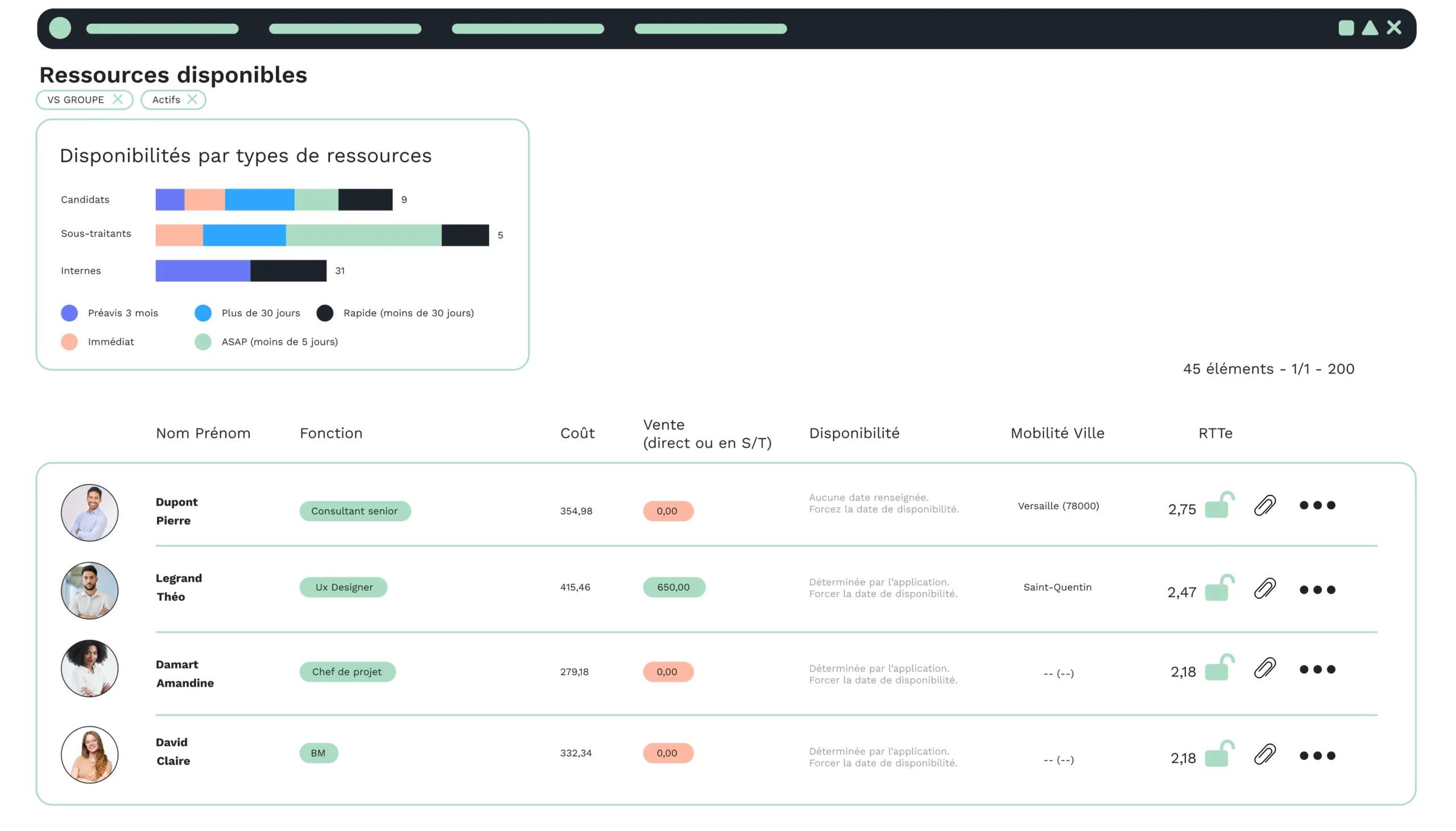You’ve decided to implement an ERP system within your IT services company. But where to start? Which ERP to choose? What features do you need?
To answer these questions, you need to go through the “specifications” phase.
The specifications will help you set up your ERP project, so you can choose the solution that best suits your needs.
This article will guide you through 28 questions to ask yourself when drawing up your specifications. And because an example always speaks louder, here’s a concrete example of a specification.
What are specifications?
We could define specifications as the collection of a company’s needs in relation to a project. This could be to acquire a new tool, to develop a website, etc.
The specifications will serve as a frame of reference between the company in need and its service providers, enabling them to discuss the project and provide a response in the form of a service or product.
It includes a certain amount of information to support the project’s reflection, such as context, objectives, resources (human and financial), deadlines, etc.
To help you draw up the best possible specifications for your ERP project, here are 28 questions to ask yourself.
ESN: 28 questions to help you draw up your ERP project specifications
Questions about your company
On the one hand, these questions enable service providers to get to know your company better, and on the other hand, they provide an opportunity to carry out an internal analysis of your company in order to establish the right foundations for the project.
- What is the name of your IT services company?
- When was it created?
- What is its business sector?
- What are its sales?
- What’s your headcount?
- How can you be organized and structured? (Group with subsidiaries, etc.)
- Who are the typical future ERP users?
- Where are you based? (Geographically)
- What is your current management system?
- What software/solutions do you use in-house?
Questions about your issues
These questions will help you understand why you’re embarking on an ERP project.
- What management difficulties does your service company face today?
- What are your objectives? (Qualitative and quantitative)
Questions about your expectations
Defining your expectations enables you to identify the functionalities you need to meet your challenges. This will serve as the basis for your search for service providers.
From a functional point of view
- Would you prefer a SaaS or On-Premise solution?
- Do you want a general or specialized publisher?
- What modules and functionalities are expected?
- What additional requirements do you have? (specific developments, training, etc.)
From a technical point of view
- What are your requirements in terms of ERP authentication (Single Sign On, etc.)?
- Would you like a mobile application linked to your ERP?
- Do you have requirements in terms of exports, imports, APIs, etc.?
From a graphic point of view
- Do you want to be able to customize your solution?
- Do you need special page layouts?
Questions about your constraints
Every project has its constraints. Talking about these constraints helps us to anticipate them and to think carefully about how to respond to them. Selected publishers will be asked to respond.
- Does the solution have to handle cross-company issues?
- Does the solution have to be multilingual?
- Does the solution have to be multi-currency?
The question about your deadlines?
- What are your deadlines (operational start-up, etc.)?
Questions about your resources
- What’s your budget?
- Who is the project referent?
- Who are the project participants?
1 Example of an ERP project specification
VSA is a specialized ERP solution for the consulting and service industries. We have therefore taken a IT services company as an example. This will enable you to visualize the rendering of a specification.
MLL, a IT services company
- By answering the main questions above, here are the specifications for MLL.
- The company: MLL consulting group
- Creation date: 2005
- Sector: company specializing in IT consulting and services
- Sales: 30 million euros
- Workforce: 400 employees
- Future users: HR, CFO, Sales, consultants and sales staff
- Locations: Paris, Bordeaux and Lyon
- Current management system: spreadsheets and small software packages (payroll and CRM)
The challenges
The company’s growth means that managing with spreadsheets and small software packages is no longer enough. We don’t have a global vision.
We want to harmonize our processes, and have reliable, secure data. We also want to increase the efficiency of our processes by 10%.
Expectations
A SaaS solution for IT services companies.
Main modules :
| Modules | Features |
| Billing | Preparation of invoices,
Internal chargeback, Reporting and indicators Follow-up of customer payments, Invoice posting Monthly closing before the 5th of the following month |
| Activities | Time and absence reporting
Validation workflows Employee activity reporting Consultant follow-up |
| RH | Preparation of pay slips
Business alerts Personnel management Management and monitoring of training plans GRPD Compliance |
| Business | Management and distribution of mission orders
Sales follow-up (signature, etc.) Summary sheet |
| Mobile application | With the main functions: time reporting, job orders, etc. |
| Security | Authentication via Microsoft accounts |
| Management | Inter-company, MLL is made up of 4 legal entities |
Deadlines
Project start-up in November for an operational launch in early February, i.e. 3 months.
The resources
Project coordinator: Daphné DUPUIS (CFO)
Project participants: Louis JEAN (HR Manager) and Vanille CELESTE (Sales).
To conclude on how to write the right specifications for an ERP project
Drawing up specifications is an essential part of any ERP project. It represents the basis and reference for the project.
The specifications also enable you to ask the right questions about the project, so as to opt for the best solution to the problems encountered within your IT services company.
Writing a specification is not an easy exercise, which is why this article compiles the essential elements that make up a specification in 28 questions.







